Selcouth Chronicles Week 19
Hello family and friends! Welcome to week 19 of the Selcouth Chronicles.
Week 19: May 12 - May 18
May 15 Ferrara ->🚗 Venice (airport) 🚢 -> Venice (city)
May 18 Venice ->🚂Villach (Austria)->🚂Kranj ->🚌Ljubljana
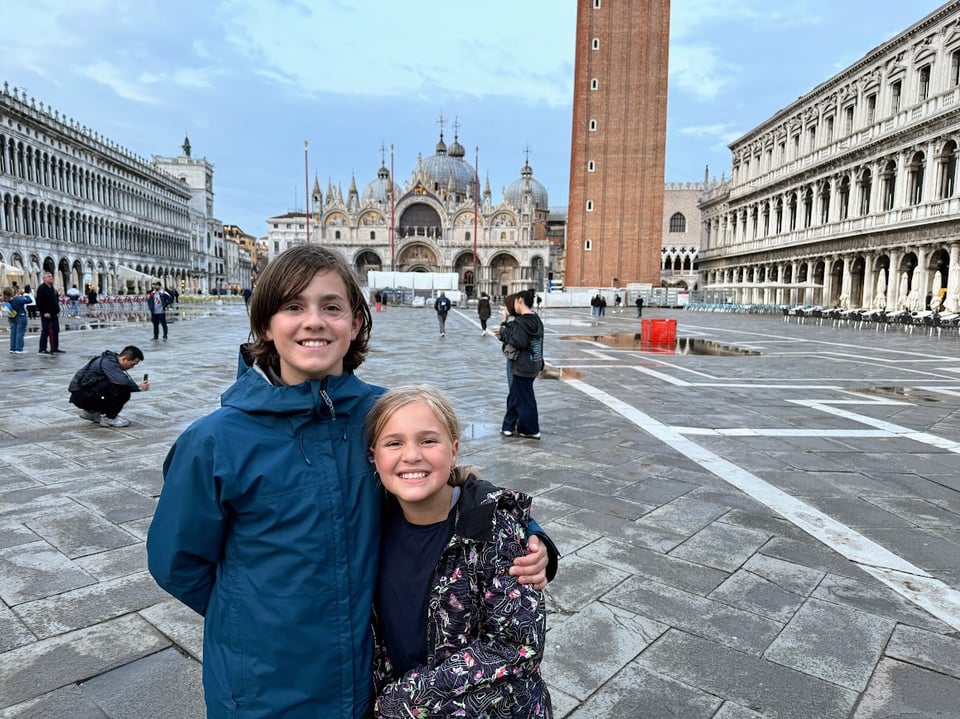
ITALY AND SLOVENIA
Highlights: Castello Estense, flag-throwing contest, pumpkin cappellacci, pasticcio di maccheroni, biking in Ferrara, MEIS, Basilica San Marcos, Palazzo Ducale
Lowlight: Saying goodbye to Meems and Papi as they returned home to NY
James:
DAY 1: This week began with the greatest holiday in the history of the world: Mother’s Day. On that wonderful day, we visited the Castello Estense, or Este Castle. It was built by the House of Este, once the most powerful family in the region. We were told that the Estes were to Ferrara what the Medici family was to Florence. It’s a cross between a plain old castle and a museum. It has rooms and rooms of really cool stuff, including ancient maps of the city and a tiny replica of the castle in plastic, which was a lot of fun to look at. But the best part was the Lion’s Tower. It was there before the castle was - it was originally just a watchtower, but the Ferrarese later decided to strengthen their defenses. They built four walls and three more towers around it, turning the Lion’s Tower into a castle. On top of the tower, you can see almost all of Ferrara, which made for some awesome photo opportunities. Afterwards, we explored the dungeon, which was interesting but decidedly less fun.
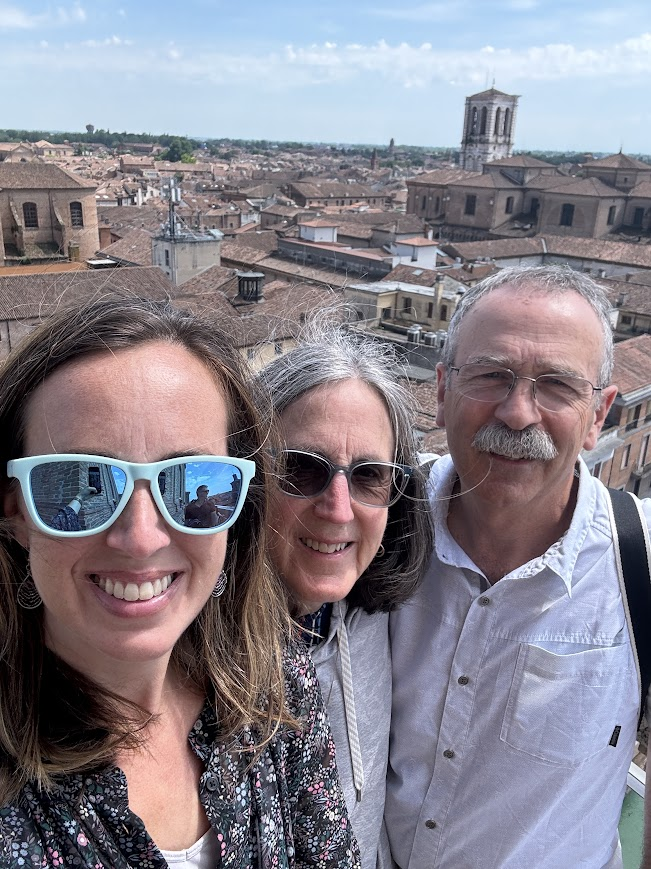
We emerged back into the town after leaving the castle and grabbed some quick sandwiches on our way to a flag-throwing competition in the Piazza del Municipio. We watched seven teams throw their flags in the air in almost-perfect choreography, but by the time the eighth team started getting ready we were hot and tired from standing in the sun. We didn’t want to collapse, so we went back to our villa to rest and watch some Lord of the Rings - Meems and Papi had never seen it before! We ended the day with dinner at Trattoria Noemi, and we have all decided that it was one of the best on the trip. For my dinner, I had rabbit. It was delicious!
DAY 2: On Monday we biked. We rented some bicycles from a nearby store and set off. Our route was along the ancient city walls of Ferrara, and it was a whole lot of fun! Trees surrounding us, the wind in our faces. It was wonderful, until Abby crashed and got a bit of a scrape on her knee. That put a damper on things, but she pushed through and finished the ride. We returned our bikes and wandered for a while, eventually deciding to get groceries while we were at it. When we arrived back at the Airbnb, Meems, Papi, and Abby went to check out a park and the Palazzo dei Diamanti (an old palace covered in diamond-shaped marble blocks) while the rest of us stayed home. When they got back, it was time for dinner and bed.
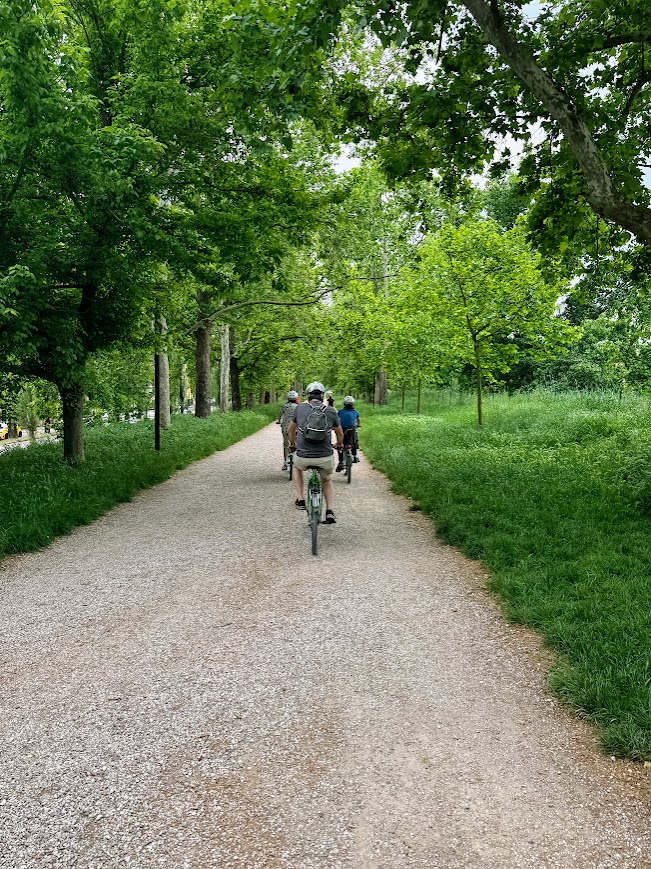
DAY 3: Tuesday was a quiet day. Mom, Meems, and Papi took a walk in the morning - the rest of us either had work to do (Dad) or were too sleepy (Abby & me). We milled about for a while (or at least I did) until they came back. When they arrived, we all went right back outside because we were hungry. Our food choice was sandwiches at a local butcher’s. The poor lady working there alone was overloaded with six different orders, and it got worse for her when another couple came in and placed more. We all felt a little sorry for her - eight orders at once! She was cooking each piece of pita bread fresh from dough on her griddle and slicing the meat individually for each sandwich. All of the ingredients came together in a wonderfully delicious pita-wrapped package. They were well worth the wait! We ate outside in our extravagantly large front yard, and it made for excellent scenery. Unfortunately, the saddest part of the day was to come: saying goodbye. Meems and Papi were leaving for home, and when they drove away everybody was sad. The rest of the day was quiet and uneventful. We took a walk past the Palazzo dei Diamanti and got more groceries. We ate our leftovers for dinner and packed our bags.
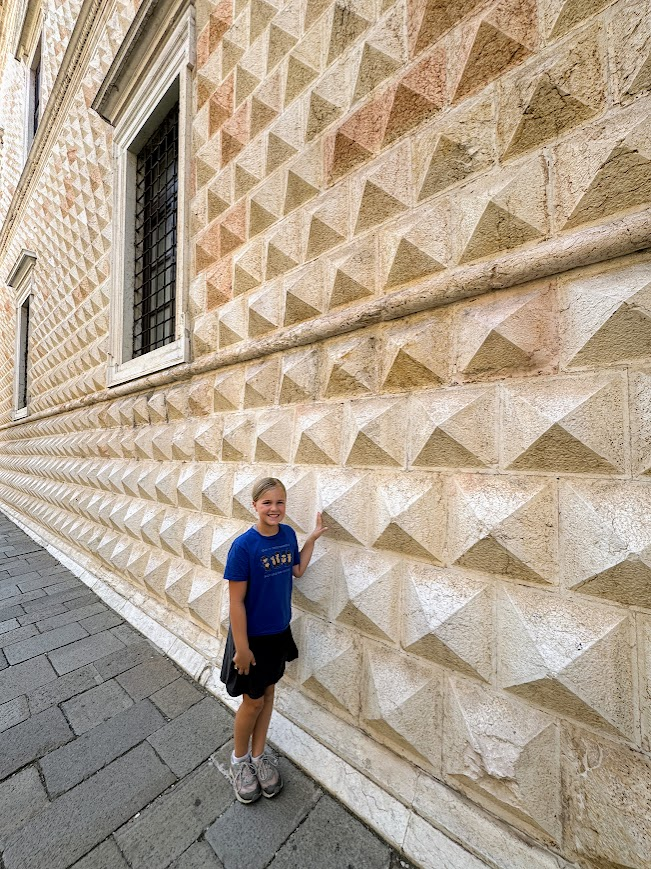
DAY 4: We checked out of our Airbnb and then walked to the Museo Nazionale dell’Ebraismo Italiano e della Shoah, or the Jewish Museum. Jews of the world have had a long, hard history. Romans destroyed their holy places and removed their citizenship, and even when they finally took back their rights, they still suffered from abuse. It was fascinating but also sad.
On our way back to the villa, we got delicious gelato and then it was time to head to our next destination: Venice. After dropping off our rental car, we took a water bus (basically a glorified motorboat) to Piazza San Marco. Piazza san Marco is one heck of a place, hemmed in by a grand clock tower, the Doge’s Palace, the Basilica of Saint Mark, and three connected buildings called The Procuraties. We met our host under the clock tower, followed him to our Airbnb, and settled into the apartment. After a short rest break, everyone except for Dad went to explore the back streets. We saw a lot of stores that sold Murano glass, a special type of glass made only in Murano, an island just next to Venice. It was really colorful! We all got tired after a while and headed back to our place to go to bed.
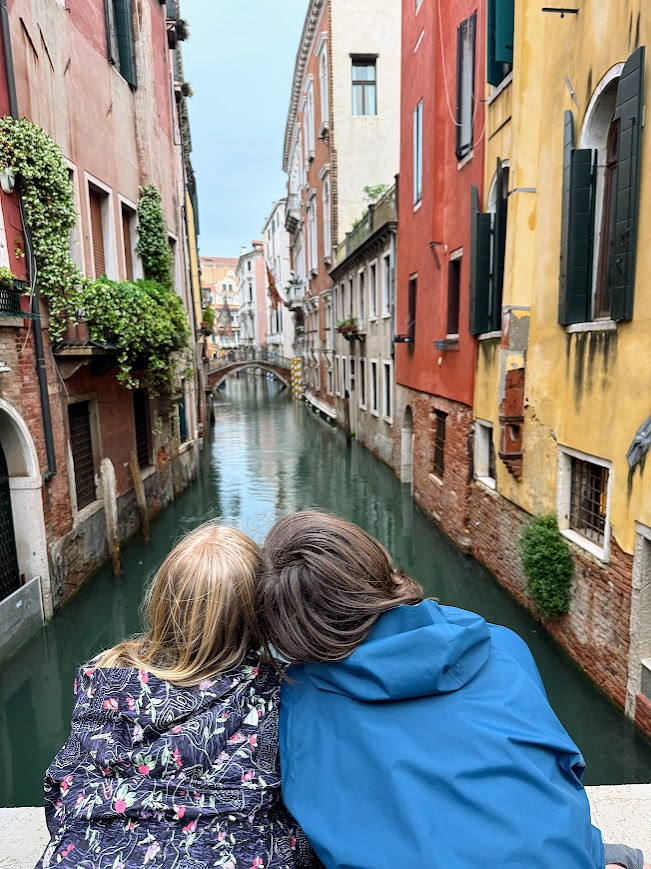
DAY 5: On Thursday, we spent most of the day at the Basilica of Saint Mark, or the Basilica San Marcos. It’s incredibly large, with mosaics covering every inch of space on the walls and ceiling. This makes for one heck of a view if you look up! The entrance area and bottom contains the main praying area, the Pala d’Oro, or golden cloth. The name is very misleading - it is not actually a cloth. It’s a huge golden altar covered with pictures of saints. After seeing it in person, I’m at a total loss to understand how it got its nickname. Once we left that area, we entered the Museum Loggia Cavalli, located on the basilica’s second floor. It houses paintings, pieces of mosaics, and even some very famous bronze horses. They are extremely pure, over 90% copper, and this made them very valuable. When invaders conquered Venice, they always took the horses as a war trophy. Now, they are finally back in their rightful homes. We ended our basilica experience by walking along its incredible exterior balcony and seeing the Piazza San Marco from on high.
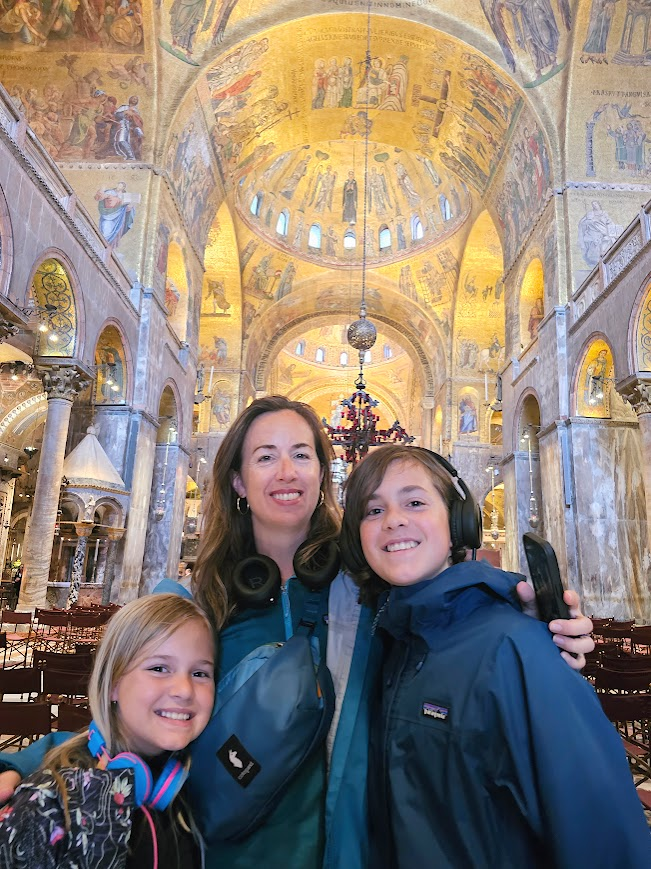
Our next destination was the Rialto Bridge, which is one of the four bridges that span the Grand Canal. It was very pretty on top of it and we got some great photos. Afterwards, we all headed back to our apartment to take a breather. Dad had work to do, so Mom, Abby, and I walked to Libreria Aqua Alta, which is, in my opinion, one of the coolest bookstores in the world. It had a good selection of books, most of them Italian, and they all had really interesting cover art and were shelved neatly. It even had a gondola filled with books. But the best part was the book stairs! The owners of the place had built a small staircase out of books that you could actually climb on top of. Unfortunately, it was very busy, so we couldn’t really linger. But it was still awesome! When we had gone through our itinerary, we went back to the Airbnb for dinner and sleep.
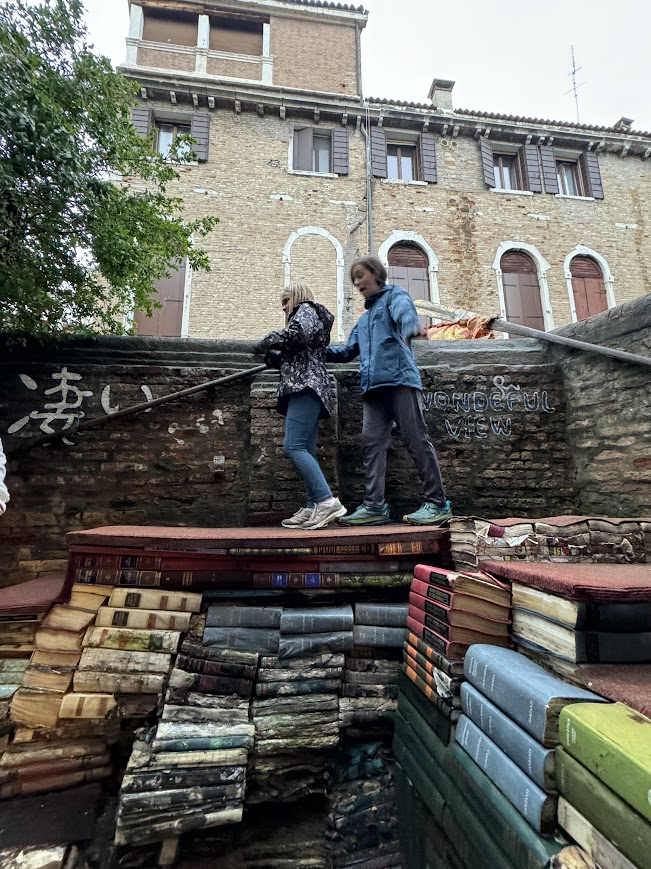
DAY 6: We immediately went back to the Piazza San Marco on Friday. This time, we were visiting the Doge’s Palace (Palazzo Ducale), the home of the leaders of medieval Venice. It had a whole lot of stuff, so I’ll try my best to remember them all. There were rooms of paintings, which were either mythological or scenes from Venice’s history. There was the meeting room, which is absolutely covered in art - mostly war scenes. We also saw an armory, which is pretty cool to be in - every type of medieval weapon possible is in there. There’s even some sort of 17th-century Gatling gun in there, which was crazy! There were rooms of statues - they were all Greek and ranged in size from small busts to huge figures. Every major player in Greek mythology was there! But there were so many of them that eventually I got bored of them. I liked a Marco Polo exhibition, which was way up there in terms of entertainment - some truly crazy stuff happened in his life. For example, he traveled the Silk Road and met the kings of the region! He also brought a whole bunch of previously undiscovered things to Europe, like cinnamon, cloves, and paper money. Last was the dungeon, which was very damp and made you a little sad to walk around, because all the prisoners would be so close to one of the most beautiful cities in the world but never go back to it.
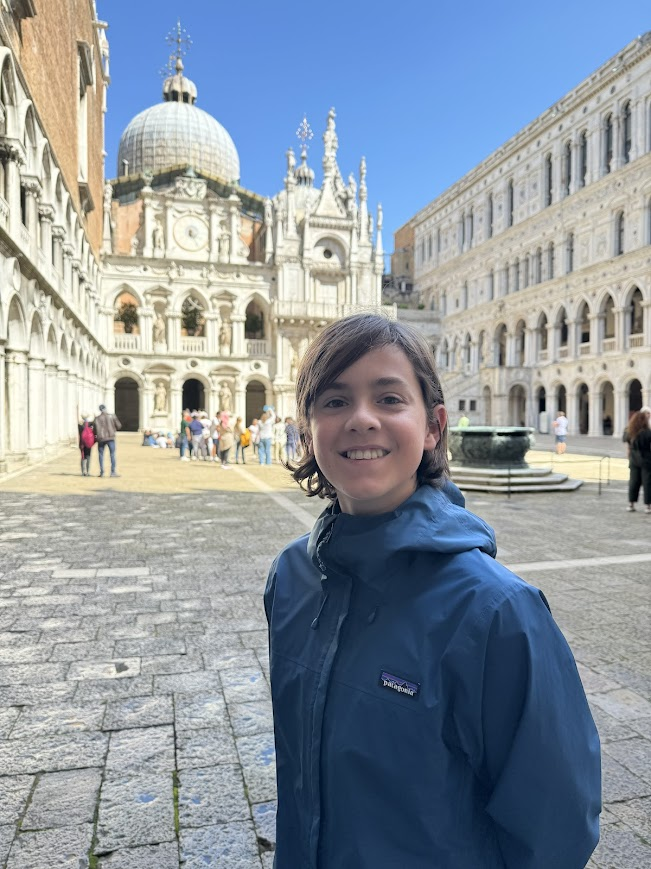
Once we were done with that, we went to the Museo Correr, or the Imperial Palace. This was less exciting, as it was much of the same thing. We went back to our place after that to finish packing for the next day, and once we were done Abby, Mom, and I went and got some delicious gelato and pizza. We also picked up croissants for breakfast the next day. Afterwards, we packed it in for the day.
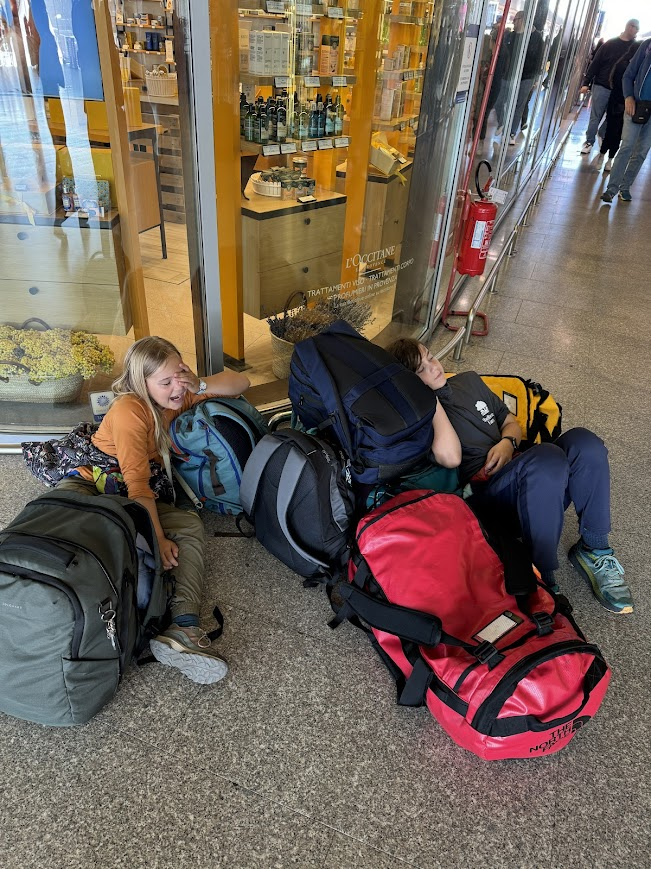
DAY 7: We woke up early to haul our bags 30 minutes across the entire city of Venice to the train station. Our train was headed to Villach, Austria, and arrived with perfect timing. The ride itself was quite pretty, with picture-perfect mountains and forests. When we got off, we waited for our second train. When it arrived, we piled on. About halfway through, we were informed that the train did not actually go to Ljubljana, Slovenia, which was our destination. Instead, all passengers going there had to get on a bus and were driven the rest of the way on a bus. After drop-off, we took a taxi to our Airbnb and set our bags down. We grabbed dinner at a Mexican place, and wandered around downtown Ljubljana and along the river for a while before going to bed.
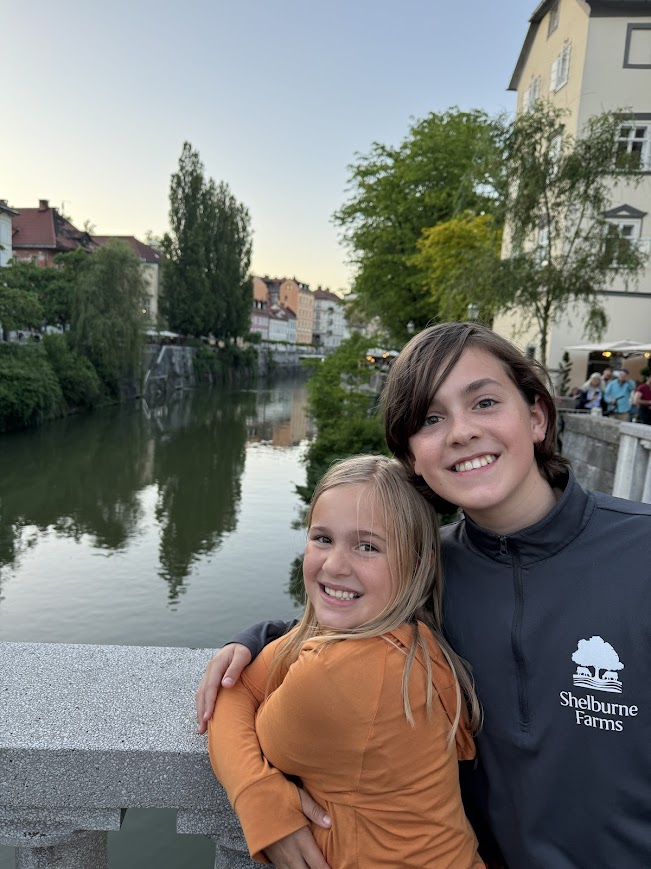
Sean:
On our way out of Ferrara, we decided to visit the MEIS - National Museum of Italian Judaism and the Shoah. We’d seen mention of it and that Ferrara had a Ghetto and Jewish presence for a long time, so it felt like a good opportunity to get a new perspective. It was a very well put together museum, and prompted me to step back and think about Jewish history and how it has tied into our journey.
The museum was high quality, merging modern technology in the form of video and projections with artifacts and relics from the distant past. Underlying it all was the story of the Jews in Italy, pulling context from farther flung regions. Included in the museum were numerous epitaphs written in Greek and Latin dedicated to Jewish people. There were also pieces of buildings and recreations of what some synagogues may have looked like in Roman cities. One section of the museum was dedicated to the siege of Jerusalem by Titus.
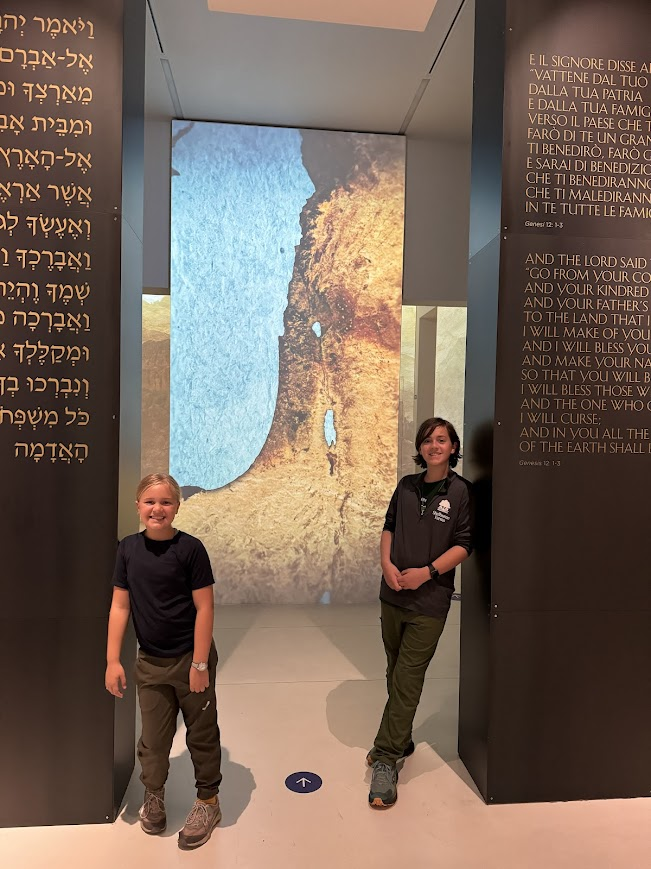
The siege of Jerusalem was the decisive event of the First Jewish-Roman war in 70 CE. To squash the uprising occurring amongst the Jewish population, the Roman emperor entrusted Titus, his son, to overtake the holy city. The full sequence of events is complex, and it is estimated that a million people died, due to the fact that many pilgrims had made their way to the city. Once the Roman army breached the walls, they burned the temple and destroyed most of the monuments. One important piece of plunder was a solid gold menorah taken from the temple. Titus brought the plunder to Rome, as well as many of the survivors to be sold as slaves. We saw this event captured in stark relief in the Roman Forum, where they built the Arch of Titus, carved into which is the scene of Titus returning with the Jewish slaves and the menorah. It was another surprising event where something we walked by in a different part of the world, is brought back into focus somewhere completely different.
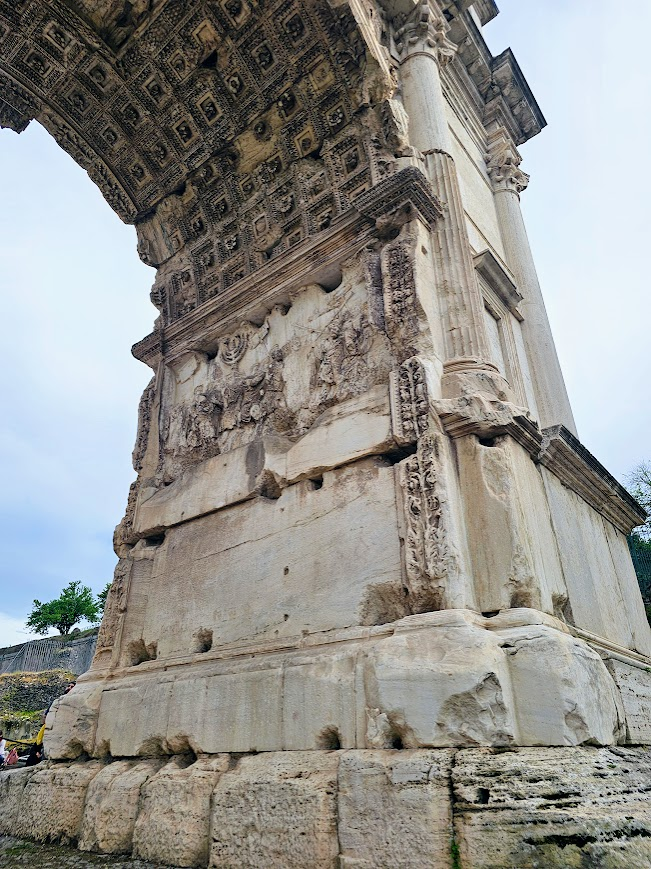
The museum then discussed how Jews scattered across the world, setting up communities in many places, and for the most part were tolerated until the rule of Constantine, who established Christianity as the primary religion of the Romans. This led to another period of hiding and worshiping in secret, until the empire fell and the power vacuum gave some respite. Here there were relics on display, such as a Torah, marriage contracts, and other examples of lives led over the centuries. Another section of the museum then focused on the 20th century in Italy, and the terrible stories we all know brought about by the fascist turn of the Italian government.
Stepping away from the unassuming exterior of the building, I was struck by the fact that it helped me put pieces together in my head that I hadn’t realized needed to be connected. I’ve heard the stories in the past, and saw the flaunting of the Romans for the sacking of Jerusalem, but hadn’t thought about the history and the story and that it’s all… real. It’s a silly thing to write, but it’s the only way I can think to describe the impact seeing it all laid out had and gave me a perspective I didn’t know I needed. New perspectives were a big goal of the trip for me, so I’m grateful that Ferrara was able to surprise me with one.
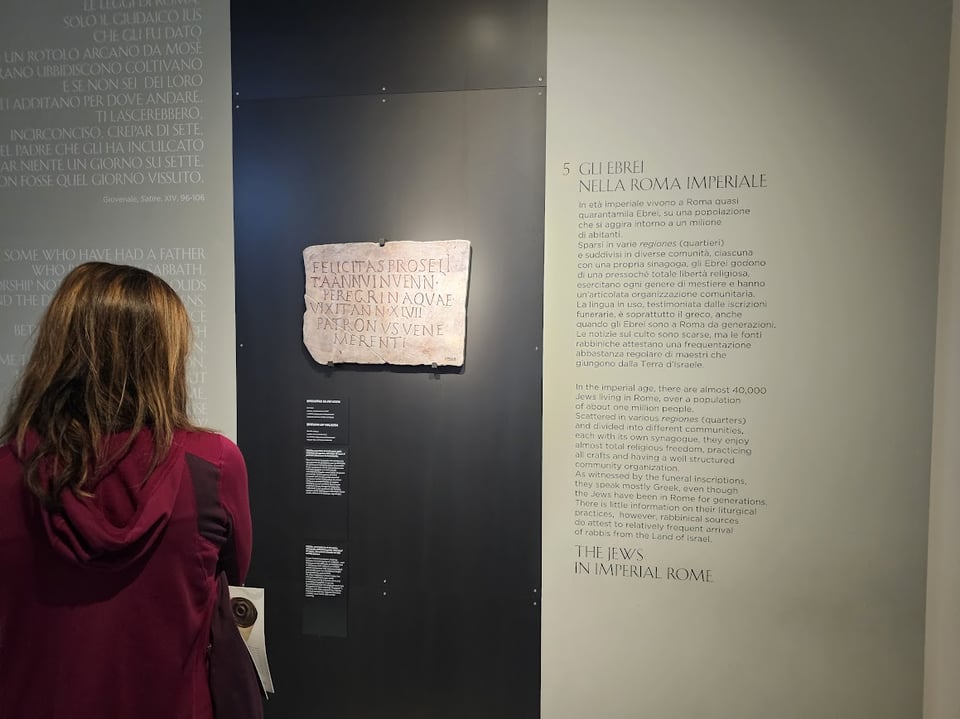
Abby:
(This week, Abby is trying out a few different forms of poetry to describe Venice!)
Limerick:
A city so pretty’s the place
That we all decided to base
For three nights and days
The streets were a maze
Oh, history left quite the trace
Haiku:
Venice, so pretty
all the little alleyways
are lined with cute stores
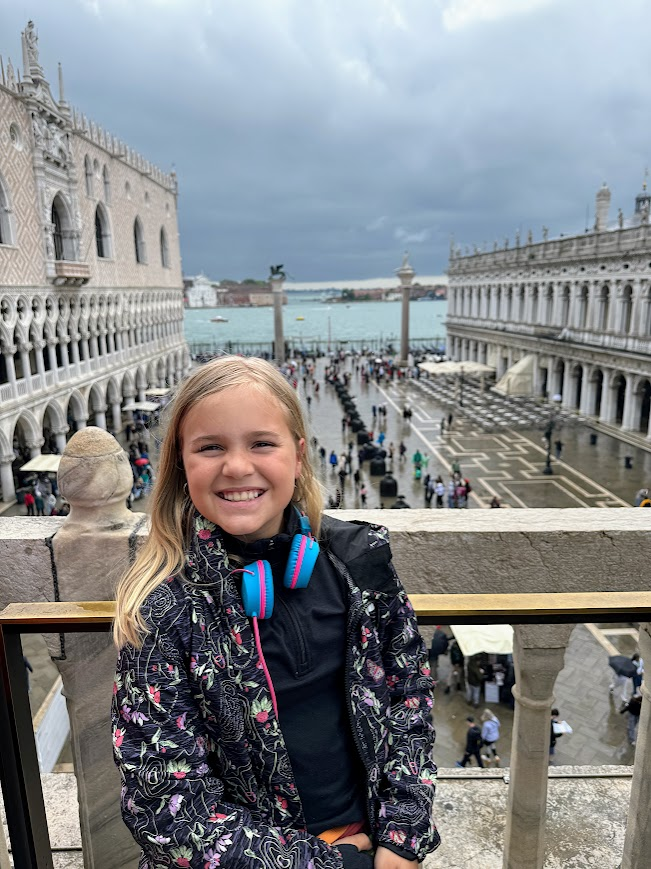
Free-form Poem:
Why did we go to Venice, you ask me?
Because of many reasons my friend
The beautiful streets bend
With effortless trend
And so do the canals that run through them.
It has been called many names
That hold no shames
Like “Queen of the Adriatic”
It’s not hard to see why everybody’s so ecstatic
To come to this aquatic
City called Venice
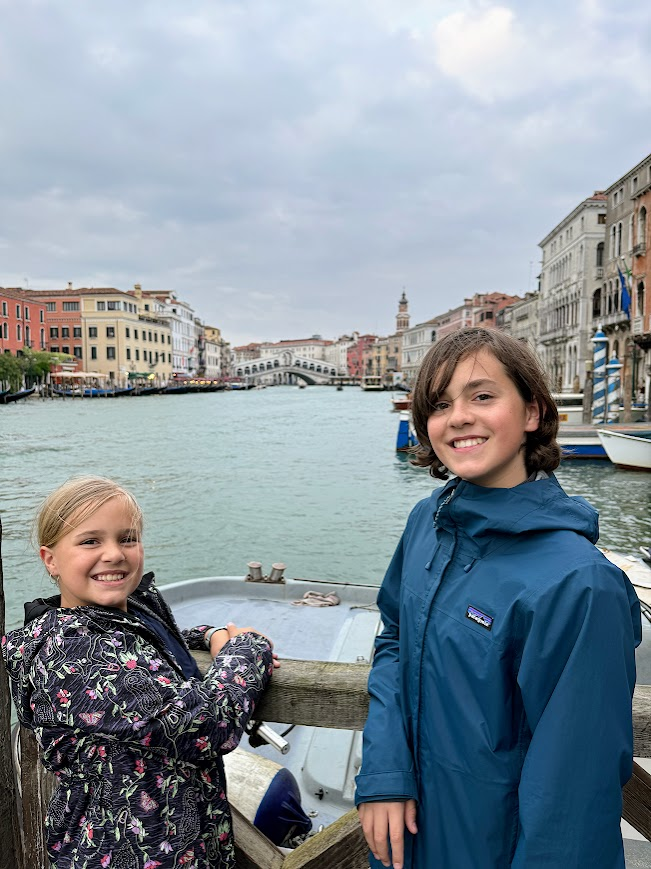
Caitlin:
Travel is a funny business; you never know exactly what the ripple effects of leaving home will be. I suspect that the effects of our travel will be largely limited to the four of us, but this week we were happily surprised to find a temporary exhibit on the travels of an individual whose explorations had far greater effects: Marco Polo. As a Venetian explorer in the 13th century, the things he learned and shared from his travels shed light on cultures that at that time were beyond the comprehension of most Europeans. I found it interesting to note that Polo never intended to write one of the best selling travel books in the world; the book came from spending time as a prisoner of war with a writer from Pisa, who was fascinated by his tales and took the time to properly record them. The resulting book, known commonly as The Travels of Marco Polo, was translated into multiple languages and inspired generations of explorers. It is even said that Christopher Colombus carried a copy with him when he set sail from Spain, mistakenly believing that he’d be traveling to the same region.
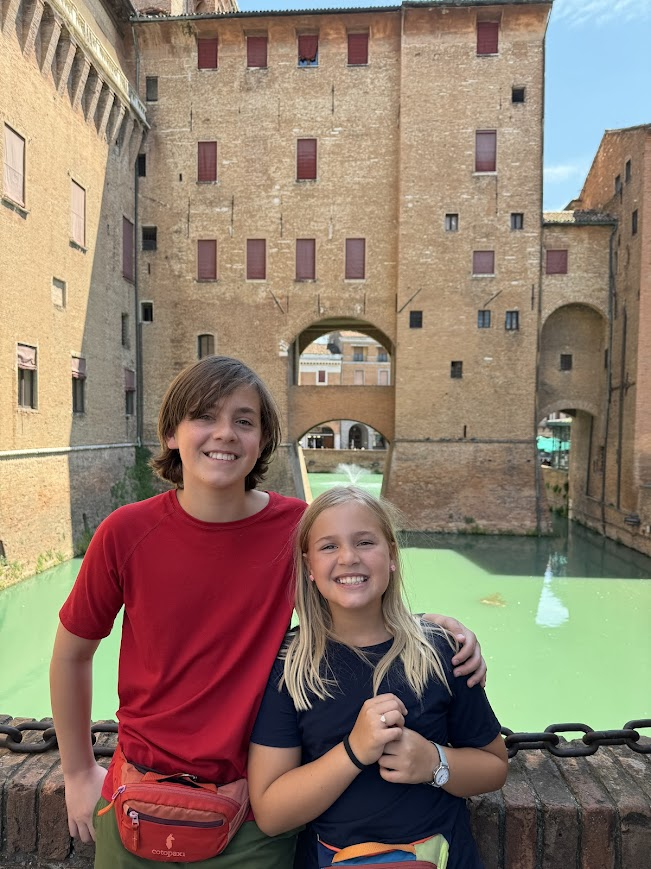
Today people have the knowledge and access to learn about other cultures from books and other sources, but for me there’s no substitute for experiential learning. It’s not always the broad strokes of a country’s history that I find interesting; it’s also the daily routines and practices that are fun to learn about. One rewarding part of traveling is seeing how history is woven into the modern fabric of daily life. In Ferrara this week, for example, we were lucky to visit during the Palio di Ferrara. The palio is a month-long competition among the 8 neighborhoods (contrade) of the city, which was first formalized in 1279. We happened to be there on the weekend of the flag-throwing competition, and attended the event mostly out of curiosity, but we loved it! The flag throwing was an impressive feat of skill, but my favorite part was seeing the pride and friendly competitiveness of the neighborhoods. Each one had their own flags and period clothing, marching bands, and teams of two flag throwers. The supporters for each neighborhood cheered on their “teams,” and I was charmed by the fact that people were still so invested in the competition after so many years. The competition brought together people of all generations, and it was a lucky treat for us as outsiders to experience this Ferrarese tradition.
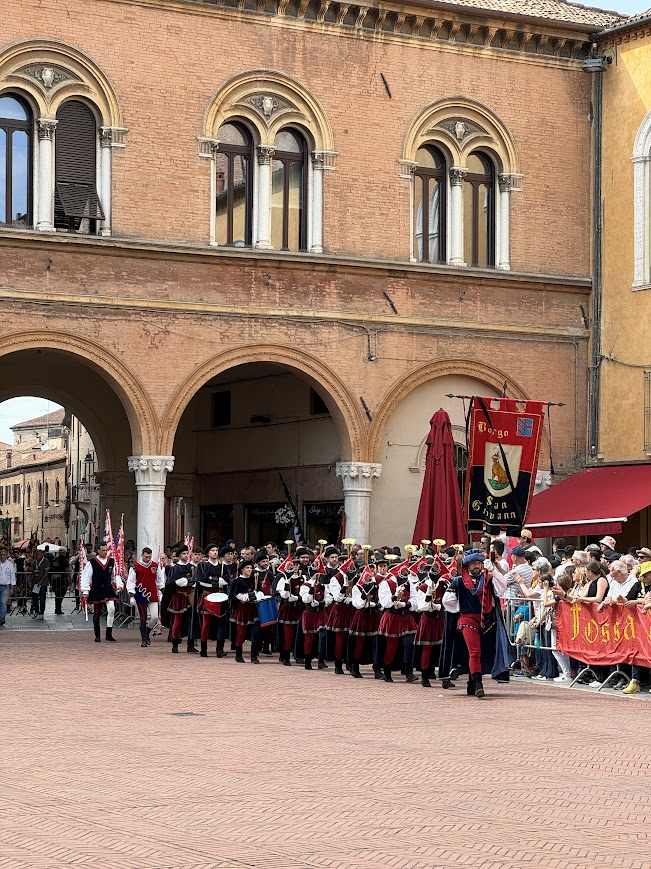
Later in the week we were in Venice, a city whose influence on the greater world history is undoubtedly outsized. Unlike in Ferrara, the Venetians historically sought to spread their influence as far as possible, and they were unabashedly proud of their city. Nicknamed “La Serenissima,” (Most Serene) Venice’s grandest buildings are peppered with paintings depicting the city as a beautiful woman, often receiving gifts from admirers, and spreading justice and prosperity to her adoring citizens. There is no doubt that Venetians are proud of their city, and the hordes of tourists that descend every day are a testament to her enduring worldwide appeal.
As I said, it’s hard to predict the consequences of our actions. The scope of our travels is vastly smaller than Marco Polo’s decades abroad, but who knows? It’s nice to think that our little adventure could likewise inspire another person in some small way.
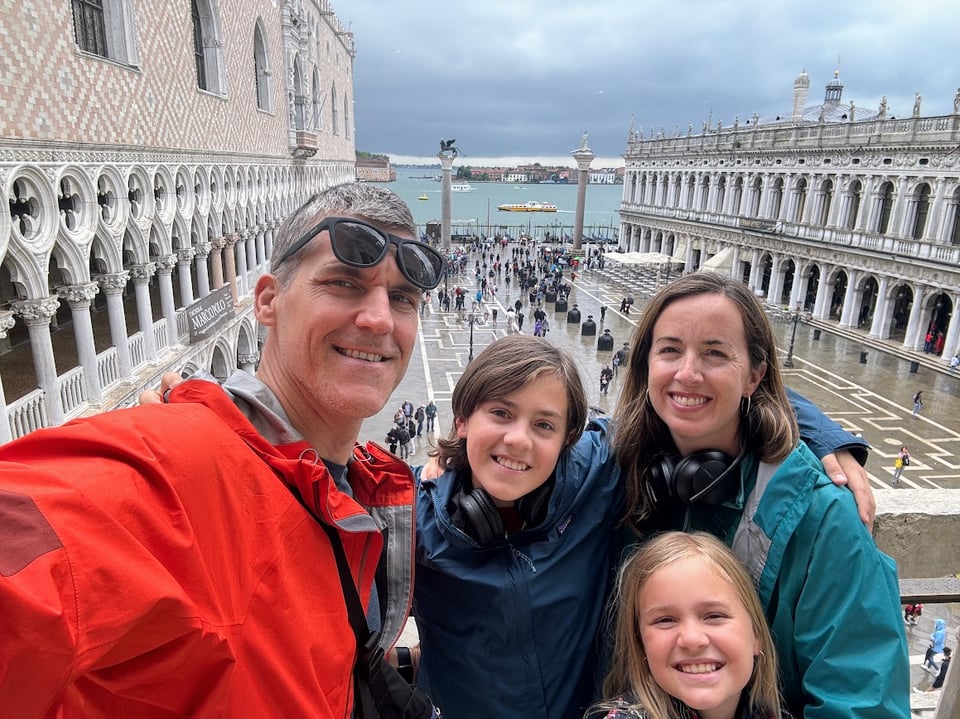
See you next week!
Sean, Caitlin, James, and Abby
Catching up? Read week 1, 2, 3, 4, 5, 6, 7, 8, 9, 10, 11, 12, 13, 14, 15, 16, 17, or 18.